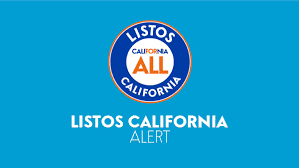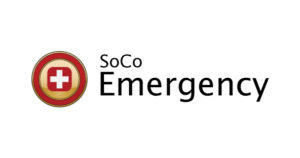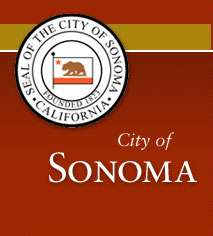Emergency Preparedness
Emergency Numbers
- 9-1-1 -Call to report a crime, an emergency, or save a life
- 2-1-1 -Call for resources and information during emergency and non-emergency
- Caltrans (510) 286-6173 | Call to report non-emergency road highway hazards
- CHP 1-800-TELL-CHP| Call to report a highway non-emergency or hazard
- City of Sonoma Police (707)996-3601 |Non-Emergency number
- City of Sonoma Water (707) 938-3332 |Call for broken water mains and contaminated water in the city of Sonoma
- County of Sonoma Sheriff’s Office (707) 565-2121| Call to report non-emergencies
- Pacific Gas and Electric (800) 743-5000 |Call for information and power outages.
- Sonoma County Animal Services (707) 565-7100|Call for help and information regarding animals.
- Sonoma Community Animal Rescue (707) 861-0699| Call to assist Sonoma County and local animal response agencies during an emergency or disaster
- Sonoma County Public Infrastructure (707) 565-5100| Call to report road hazards
- Sonoma Valley Fire District (707)-996-2102
- Sonoma Valley Hospital (707)935-5000
- Valley of the Moon Water District (707)996-1037 | Call for broken water mains and contaminated water in the unincorporated area of Sonoma valley
IF YOU ARE UNDER A FLOOD WARNING, FIND SAFE SHELTER RIGHT AWAY
- Do not walk, swim, or drive through flood waters. Turn Around, Don’t Drown!
- Just six inches of moving water can knock you down, and one foot of moving water can sweep your vehicle away.
- Stay off of bridges over fast-moving water.
- Determine how best to protect yourself based on the type of flooding.
- Evacuate if told to do so.
- Move to higher ground or a higher floor.
- Stay where you are.
- Make sure you are signed up for SoCoAlert in case there is an evacuation issued for your area, https://socoemergency.org/get-ready/sign-up/.
- Never, ever touch a downed power line or go near one. Power lines are not insulated like power cords. Always assume the power line is live.
- Don’t touch anything or anyone in contact with a downed power line.
- Keep children and pets away from a downed power line.
- Don’t drive over a downed power line.
- Call your Local Fire Agency or 911 if immediate danger
- PGE: 1-800-743-5000
In case of power outages:
- If you know someone who would be medically adversely impacted by a power outage, please have them reach out to the local Independent Living Center in Santa Rosa – Disability Services and Legal Center at 707-528-2745. They may be able to assist with backup power options or lodging if the person may experience a prolonged power outage.
- Redwood Empire Food Bank Food Finder Tool in case people experience food spoilage and need to find a food distribution site: https://getfood.refb.org/
- You can also dial 2-1-1 or text ZIP CODE to 898-211 for incident specific information and storm-related resources.
Information on preparing for a flood can be found here: https://socoemergency.org/emergency/flooding/
To report downed trees, rock slides, or other road hazards, call:
- Business Hours: (707) 565-5100 (SoCo Department of Public Infrastructure)
- Overnight: (707) 565-2121 (SoCo Sheriff’s Office)
The North Bay, including Sonoma, Napa, Solano and Marin Counties , has multiple ANIMAL DISASTER RESPONSE resources (CARTs). But responders may not be able to reach animals or people trapped by water or debris for several days in some situations.
- For Animal Flood Prep Resources, go to halterproject.org
- For questions about local animal assistance resources, contact us at: Rescue@halterfund.org
People with Disabilities
Disability intersects every demographic group—there are people with disabilities of all ages, races, genders or national origin. And, disabilities can impact a person in a variety of ways—both visible and invisible. For people with disabilities and their families, it is important to consider individual circumstances and needs to effectively prepare for emergencies and disasters.
Extreme Heat
There is hot, and then there is hot! Extreme heat is a period of high heat and humidity with temperatures above 90 degrees for at least two to three days. In extreme heat your body works extra hard to maintain a normal temperature, which can lead to death. Extreme heat is responsible for the highest number of annual deaths among all weather-related hazards.
 Older adults, children and sick or overweight individuals are at greater risk from extreme heat.
Older adults, children and sick or overweight individuals are at greater risk from extreme heat. Humidity increases the feeling of heat.
Humidity increases the feeling of heat.Heat-Related Illnesses
Know the signs of heat-related illnesses and ways to respond. If you are sick and need medical attention, contact your healthcare provider for advice and shelter in place if you can. If you are experiencing a medical emergency call 9-1-1.
Get more detailed information about heat-related illnesses from the CDC and National Weather Service.
HEAT STROKE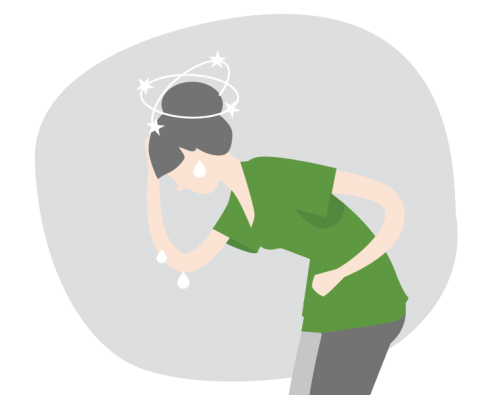
- Signs:
- Extremely high body temperature (above 103 degrees F) taken orally
- Red, hot and dry skin with no sweat
- Rapid, strong pulse
- Dizziness, confusion or unconsciousness
If you suspect heat stroke, call 9-1-1 or get the person to a hospital immediately. Cool down with whatever methods are available until medical help arrives. Do not give the person anything to drink.
Earthquakes
An earthquake is a sudden, rapid shaking of the ground caused by the shifting of rocks deep underneath the earth’s surface. Earthquakes can cause fires, tsunamis, landslides or avalanches. While they can happen anywhere without warning, areas at higher risk for earthquakes include Alaska, California, Hawaii, Oregon, Puerto Rico, Washington and the entire Mississippi River Valley.
Prepare Before an Earthquake
 The best time to prepare for any disaster is before it happens.
The best time to prepare for any disaster is before it happens.Stay Safe During
 If an earthquake happens, protect yourself right away
If an earthquake happens, protect yourself right awayProtect Yourself During Earthquakes

Stay Safe After
 There can be serious hazards after an earthquake, such as damage to the building, leaking gas and water lines, or downed power lines.
There can be serious hazards after an earthquake, such as damage to the building, leaking gas and water lines, or downed power lines. Once you are safe, pay attention to local news reports for emergency information and instructions via battery-operated radio, TV, social media or from cell phone text alerts.
Once you are safe, pay attention to local news reports for emergency information and instructions via battery-operated radio, TV, social media or from cell phone text alerts.Wildfires
Wildfires are unplanned fires that burn in natural areas like forests, grasslands or prairies. These dangerous fires spread quickly and can devastate not only wildlife and natural areas, but also communities.
Prepare for Wildfires
 Recognize Warnings and Alerts
Recognize Warnings and Alerts
 Make an Emergency Plan
Make an Emergency Plan
 Review Important Documents
Review Important Documents
![]() Strengthen your Home
Strengthen your Home
![]() Know your Evacuation Zone
Know your Evacuation Zone
![]() Gather Supplies
Gather Supplies
Emergency Preparedness Websites
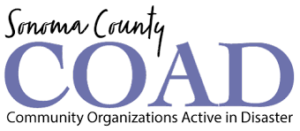
COAD stands for Community Organizations Active in Disaster. This term is often used interchangeably with VOAD or Voluntary Organizations Active in Disaster and both are member organizations that include safety net organizations who collaborate with community, nonprofit, and faith-based organizations, government agencies, schools and private businesses to serve the most vulnerable in their community.
COAD member organizations focus on preparedness and are ready to respond with resources, volunteers and coordination of services to those who need assistance during and immediately after a disaster, and ideally hold the capacity to activate a long-term recovery group.
Listos California
The Listos (Ready) California Emergency Preparedness Campaign is a visionary initiative of Governor Gavin Newsom to engage over one million Californians in vulnerable populations and geographies, ensuring that they are prepared for emergencies, and showcasing the best that California has to offer through community service, neighborhood preparedness, and disaster resilience. The campaign will bolster the efforts of first-responders by ensuring that the most vulnerable Californians are connected to culturally and linguistically competent support. It will also build on the success of existing resident efforts throughout the State of California to foster local community disaster preparedness networks.
Source: Listos CA. Click on the DISASTER GUIDE icon to access the PDF format in various languages.
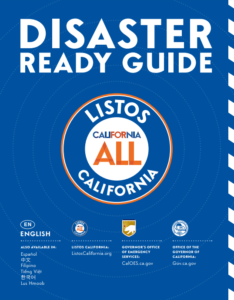
Click on the LISTOS California icon to access the website.
County of Sonoma
Sonoma County has experienced a number of disasters over the past several years including floods, earthquakes, power shutoffs, a pandemic and wildfires. The County’s alert and warning systems have grown to notify residents of an emergency in their area early and accurately. Many alerts require individuals opt-in, below are links to sign-up and information on additional warning systems. To learn more about the County’s Emergency and Preparedness information visit www.socoemergency.org
Source: Soco Emergency
City of Sonoma
In a major disaster, it might be several days before vital city services are restored. Sonoma is exposed to a wide variety of hazards, both natural and man-made, including earthquakes, fires, and severe storms. In addition to signing up for alerts, your best defense is to take steps to be prepared for emergencies, both at home and in your place of business. It’s also important, especially during wildfire season, to prepare for extended power outages. We’ve provided links to a number of resources to help you create a plan that will assist you during an emergency.
Source: City of Sonoma




